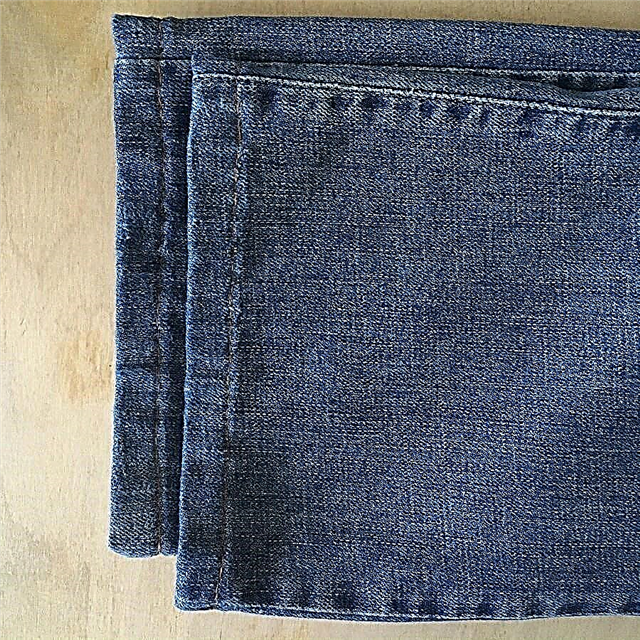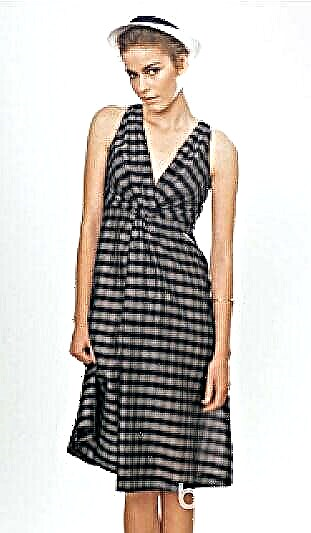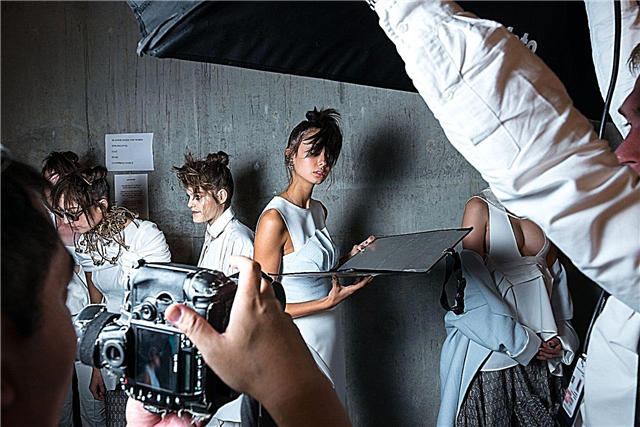The method, without using the machine, gives an even seam, similar to a machine line, on both sides.

There are many ways to hem jeans. We have already talked about some of them. For example, how to hem jeans while maintaining a factory seam, read here and here.
The method from this workshop does not involve the use of a sewing machine. It is suitable for those cases when, for example, the machine is not at hand, and jeans need to be hemmed urgently, or will help those who do not sew on the machine. We will not use the back seam of the needle, so jeans may need to be tucked, and the back seam of the needle looks neat only from the front. We will perform two seams forward with the needle in one line: you will have to be careful and attentive, but the result will be as close as possible to the machine line on both sides.

The situation is this: the jeans were initially long, so they frayed behind the lower edge. We cut them to the desired length and go up. Of course, the same actions for shortening and hemming jeans can be performed using a sewing machine and a simple line on it.
How to repair jeans torn on a knee: a master class
You will need:
- jeans;
- other jeans of suitable length to determine the desired length of hemmed jeans (you can do without them);
- ruler;
- pencil or crayon for fabric;
- scissors for fabric;
- tailor pins;
- suitable threads (it is important that they are strong and not too thin);
- needle for hand sewing;
- if you want to make scuffs - a fine sandpaper.
How to make jeans soft at home
Step 1

Jeans must be washed and dried before work.
First, determine the desired length of jeans. You can do this by trying on jeans and putting a mark, for example, with a pin, on one of the legs. You can use other jeans of suitable length (it is worth considering that jeans of different cuts can fit differently, it is better to take jeans of about the same model and size as an example; for example, we cut off tight-fitting skinny - for example, take the same skinny).
If you act the same way as in this master class, turn out the jeans that you hem, inside out, straighten. Align the step seams of the two pants and place a mark where the trouser leg that we are guided by ends.
Step 2

At the level of the set mark, draw a line parallel to the bottom edge of the leg. This will be the bottom of jeans.

Now you need to determine the width of the hem. You can take as a basis the width of the original hem of jeans or focus on the rest of the whole fabric (if the frayed edge does not allow you to make the hem wider).
In our case, the jeans were tucked 1.5 cm, we will do the same. The edge is twisted twice, so we multiply 1.5 cm by 2, we get 3 cm. We postpone this value from the drawn line down and draw a parallel line.
Step 3

Fold the jeans exactly in half so that the side, step seams and bottom hem line up.The leg detail with the drawn lines should be on top. Trim both legs at once along the bottom line drawn.
Step 4

Tuck the bottom edge of the leg inward by 1.5 cm. Can be ironed for convenience.

Turn the edge inward again also by 1.5 cm. Secure the turn with pins and bast. Repeat for the second leg. Remove the pins.
Step 5

We begin to hem jeans. Pass the thread into the needle, hide the knot under the gateway. Sew the needle with a simple seam forward, laying a seam 0.2-0.3 mm from the edge of the turn. Try to sew stitches of the same length.
Important: perform each needle puncture separately (that is: you do not need to make a stitch in one movement with a needle, each stitch - two movements); the needle should enter the tissue perpendicular to the tissue (see photo). So the stitches are smoother. Sew by pulling the thread a little so that the seam is not loose, but dense, well grasping all layers of fabric.

Sew in a circle the bottom of one leg and repeat for the other.
Step 6

Now we will execute the second seam forward the needle. Sew so that new stitches close the gaps between the previous ones, and try to get the needle in and out at the points where the stitches of the first stitch begin and end. As before, sew one stitch in two movements, insert the needle perpendicular to the fabric and pull the thread slightly so that the seam holds the fabric layers tightly.
When the seam is finished, remove the mark.
To make scuffs, gently rub the edge with a fine emery cloth. Done.

Master class and photo: Natalya Pykhova



